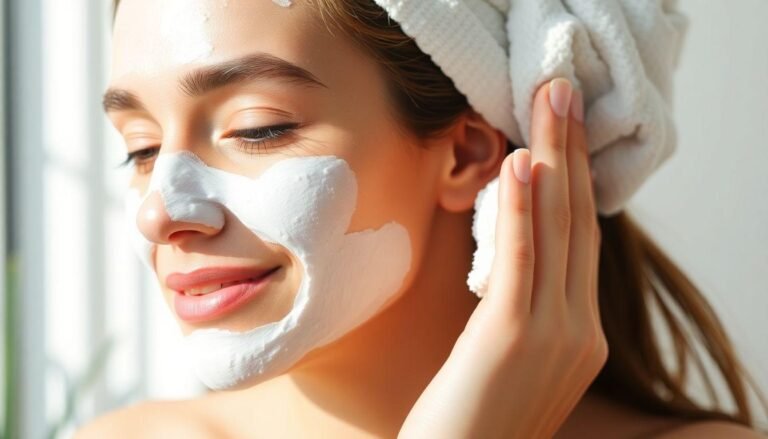Looking for an affordable, accessible skincare solution that’s probably sitting in your pantry right now? Baking soda has been a beauty secret for generations, offering numerous benefits for your skin without breaking the bank. While fancy serums and creams have their place, sometimes the simplest remedies deliver impressive results. I’ve personally experimented with baking soda skin care techniques for years and discovered they can truly transform your complexion when used correctly. Remember, though, that everyone’s skin is unique, so always patch test new treatments before applying them to your entire face.
Why Baking Soda Works Wonders for Your Skin
Before diving into specific techniques, let’s understand why baking soda (sodium bicarbonate) can be beneficial for your skin. Its slightly alkaline nature helps balance your skin’s pH levels, especially helpful if you tend toward oiliness. The fine, gritty texture makes it a natural exfoliant that removes dead skin cells without harsh chemicals. Plus, it has natural antibacterial properties that can help combat acne-causing bacteria.
That said, baking soda isn’t right for everyone. If you have sensitive skin or conditions like eczema or rosacea, you might want to stick with gentler alternatives or consult a dermatologist first. But for many people, it’s an effective, budget-friendly addition to their skincare routine.
5 Effective Baking Soda Treatments for Radiant Skin
1. Gentle Exfoliating Scrub
One of the simplest ways to use baking soda is as an exfoliant. Dead skin cells can clog pores and make your complexion look dull, but regular exfoliation reveals the fresh, glowing skin underneath.
To create this scrub:
I recommend using this scrub no more than twice a week to avoid over-exfoliation, which can irritate your skin and actually increase oil production. After using this scrub, your skin should feel smoother and look brighter almost immediately.
2. Acne-Fighting Spot Treatment
Got a pesky pimple? Baking soda can help reduce inflammation and speed healing. Its antibacterial properties make it effective against the bacteria that cause breakouts, while its alkaline nature helps neutralize acidic skin that can contribute to acne.
For a quick spot treatment:
This works best for occasional breakouts rather than severe or cystic acne. You might notice reduced redness and inflammation after just one application, though stubborn spots might need a couple of treatments.
3. Brightening Face Mask
Want to tackle dullness, uneven tone, and minor discoloration? A baking soda mask can help brighten your complexion by removing dead cells and impurities that make skin look tired.
Here’s how to make a brightening mask:
The honey in this mask adds moisture to prevent dryness, while lemon provides additional brightening benefits. Your skin should look more radiant immediately after use. I’ve found this particularly helpful before special events when I want my skin to look its absolute best.
4. Soothing Baking Soda Bath
Skin issues don’t stop at your face. Body acne, razor bumps, and general roughness can all benefit from baking soda’s properties. A full-body soak can help soothe irritation and soften rough patches.
For a skin-smoothing bath:
This treatment is especially helpful if you’re dealing with sunburn, insect bites, or skin irritation from sweating. The alkaline properties help neutralize the acids in sweat that can cause discomfort.
5. Deep-Cleansing Pore Treatment
Enlarged pores can trap oils, dirt, and makeup, leading to blackheads and a generally uneven complexion. Baking soda can help deep-clean pores for a smoother appearance.
Try this pore-minimizing treatment:
After this treatment, you might notice your pores look less noticeable and your skin feels incredibly clean. Following with a good moisturizer helps maintain balance and prevents your skin from producing excess oil.
Important Precautions When Using Baking Soda
While these treatments can be effective, there are some important things to keep in mind. First, don’t use baking soda on your skin more than 2-3 times per week. Its alkaline nature can disrupt your skin’s natural acid mantle if overused.
Second, always follow any baking soda treatment with a good moisturizer. The exfoliating properties can sometimes lead to dryness if you don’t replace lost moisture.
Finally, if you experience any stinging, redness, or irritation, rinse immediately and discontinue use. Some skin types are simply too sensitive for baking soda treatments.
The road to clear, glowing skin involves finding what works for your unique complexion. Baking soda skin care might be the affordable solution you’ve been searching for all along. Whether you’re battling occasional breakouts, dullness, or rough texture, these simple treatments might be worth adding to your beauty routine. The best part? No expensive products required—just a humble box from your kitchen cabinet and a few minutes of your time.







